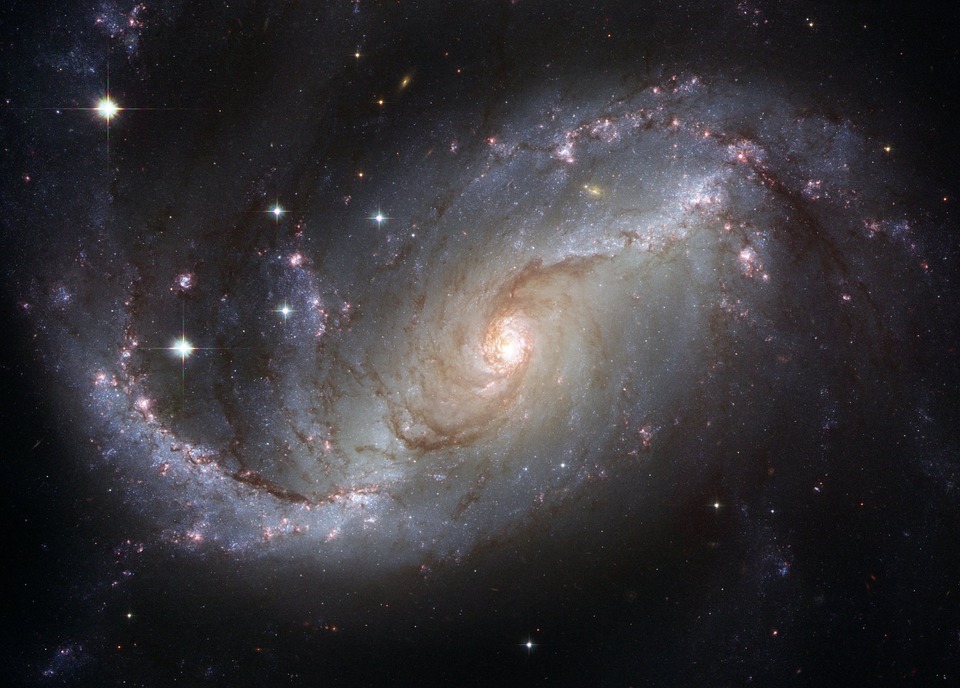Earth sits within the billions of stars in the Milky Way galaxy and it is the place in the universe that we call home. Scientists recently found a clue that could reveal a little more about the galaxy’s early history, including the moment it began to turn into the massive galaxy known today.
Scientists, with the use of the European Space Agency’s Gaia satellite, were able to pinpoint one particular star, referred to as Nu Indi which is found 94 light-years from Earth. Astronomers found that Nu Indi came from the remains of the Milky Way when it started to consume other neighboring galaxies and star systems. It was 11 billion years ago when the Milky Way collided with another galaxy called the Gaia Enceladus or Gaia Sausage, which happened to be the largest satellite galaxy that was consumed by the Milky Way.
When the two galaxies collided, Nu Indi had just been formed. Upon analysis showing that Nu Indi was not abundant in metal, astronomers concluded that it must not have formed where it was located - the southern constellation of Indus. Scientists used the ESA’s Gaia satellite to monitor Nu Indi’s movements over time, and along with data from NASA’s Transiting Exoplanet Survey Satellite, they were able to depict what Nu Indi may look like, with a size of three times the Sun but with only 85 percent of the giant star’s mass.
According to Dr. Saskia Hekker, who led the team that was able to pinpoint Nu Indi and monitor its movements, “This chronological classification not only helps us to understand how the collision changed our galaxy. It also gives us a sense of how collisions and mergers impacted other galaxies and influenced their evolution.”
Onto more discoveries within the Milky Way, Sci News reports that researchers have found that around 26 percent of exoplanets found in the galaxy have oceans in its surface and all of which likely have volcanic activity occurring.
Dr. Lynnae Quick of NASA’s Goddard Space Flight Center revealed that there are plumes of water ejecting from Enceladus and Europa, the respective moons of Saturn and Jupiter, which suggest the presence of subsurface oceans underneath the icy surfaces. Within these subsurface oceans also suggests the presence of energy, which is essential in forming life. This brought on the possibility of other exoplanets having the same geological activity.



 Trump Signs Executive Order to Boost AI Research in Childhood Cancer
Trump Signs Executive Order to Boost AI Research in Childhood Cancer  CDC Vaccine Review Sparks Controversy Over Thimerosal Study Citation
CDC Vaccine Review Sparks Controversy Over Thimerosal Study Citation  Astronomers have discovered another puzzling interstellar object − this third one is big, bright and fast
Astronomers have discovered another puzzling interstellar object − this third one is big, bright and fast  FDA Lifts REMS Requirement for CAR-T Cell Cancer Therapies
FDA Lifts REMS Requirement for CAR-T Cell Cancer Therapies  Neuralink Expands Brain Implant Trials with 12 Global Patients
Neuralink Expands Brain Implant Trials with 12 Global Patients  SpaceX’s Starship Completes 11th Test Flight, Paving Way for Moon and Mars Missions
SpaceX’s Starship Completes 11th Test Flight, Paving Way for Moon and Mars Missions  Lab-grown meat: you may find it icky, but it could drive forward medical research
Lab-grown meat: you may find it icky, but it could drive forward medical research  Senate Sets December 8 Vote on Trump’s NASA Nominee Jared Isaacman
Senate Sets December 8 Vote on Trump’s NASA Nominee Jared Isaacman  Eli Lilly’s Inluriyo Gains FDA Approval for Advanced Breast Cancer Treatment
Eli Lilly’s Inluriyo Gains FDA Approval for Advanced Breast Cancer Treatment  Cogent Biosciences Soars 120% on Breakthrough Phase 3 Results for Bezuclastinib in GIST Treatment
Cogent Biosciences Soars 120% on Breakthrough Phase 3 Results for Bezuclastinib in GIST Treatment  Lost in space: MethaneSat failed just as NZ was to take over mission control – here’s what we need to know now
Lost in space: MethaneSat failed just as NZ was to take over mission control – here’s what we need to know now  Tabletop particle accelerator could transform medicine and materials science
Tabletop particle accelerator could transform medicine and materials science  SpaceX Starship Explodes in Texas During Test, Citing Nitrogen Tank Failure
SpaceX Starship Explodes in Texas During Test, Citing Nitrogen Tank Failure 































